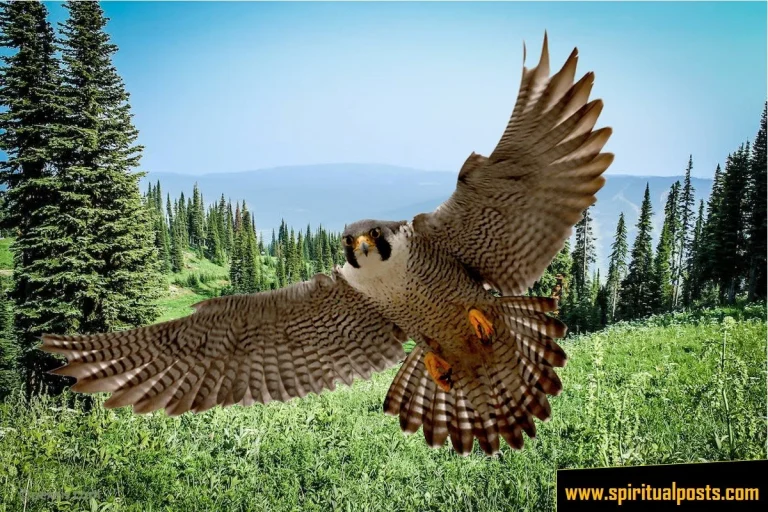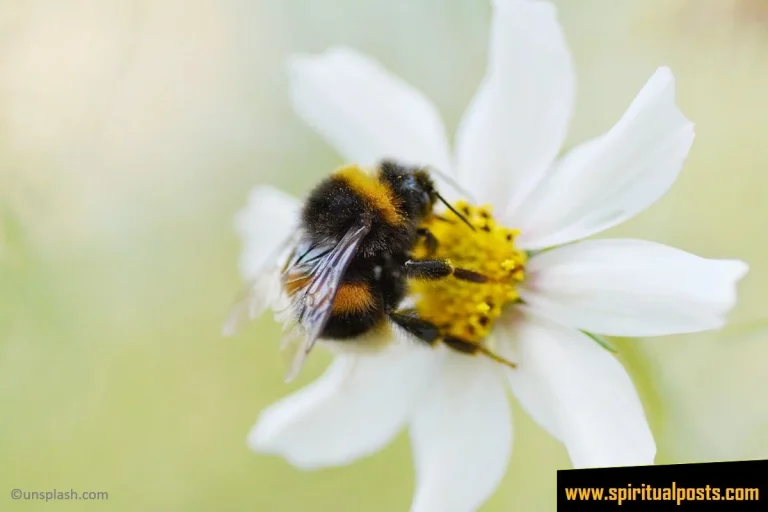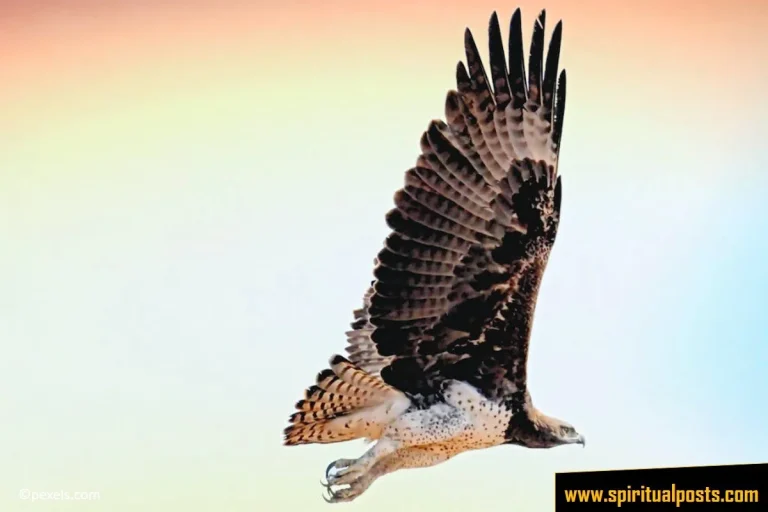Wallaby Spiritual Meanings and Symbolism

Wallabies are medium-sized marsupials mostly found in Australia, closely related to kangaroos. They stand out because of their unique hopping movement, which helps them travel quickly across rough landscapes.
These animals live in diverse habitats, from dense forests to dry grasslands. Different species have adapted to thrive in their specific environments, showing how versatile they are.
Wallabies have strong hind legs that let them jump far and fast, while their tails help them balance during leaps. Their bodies are built for speed and agility, making them expert navigators of tough terrain.
As herbivores, wallabies eat plants, grasses, and fruits, playing a key role in their ecosystems. Beyond their physical traits, they hold cultural and symbolic meanings, which we’ll explore next.

Key Takeaways
The key points about the spiritual meanings and symbolism of wallaby are:
- Wallaby symbolizes adaptability, resilience, and the importance of living in harmony with nature.
- Wallaby’s ability to thrive in diverse environments represents the cyclical nature of life, death, and renewal.
- Wallaby’s graceful yet powerful spirit encourages the cultivation of balance between gentleness and strength.
- Wallaby’s heightened intuition and awareness can lead to a deeper understanding of one’s place in the interconnected web of life.
What Does It Mean When You See a Wallaby?
Spotting a wallaby could be a reminder to stay agile and adaptable in life. Their ability to move swiftly through rough landscapes symbolizes resilience and quick thinking when facing challenges.
They also represent a deep connection to nature, encouraging you to stay grounded. Their presence might be a sign to pay attention to your surroundings and move forward with confidence, even when things feel uncertain.
Observing how wallabies leap with precision can inspire you to tackle obstacles with the same grace. Their behavior offers lessons on flexibility and determination, helping you grow through life’s ups and downs.
Wallaby Symbolism
Wallabies symbolize adaptability, teaching us to adjust smoothly to change. Their ability to thrive in different environments shows the value of being open-minded and resourceful.
Their powerful leaps represent quick decision-making and taking bold action when needed. Since they often move in groups, they also highlight the importance of community and teamwork in overcoming challenges.
Beyond personal growth, wallabies remind us to respect nature and live in harmony with the earth. Their way of life encourages a balanced, eco-conscious mindset, blending strength with gentleness. By learning from them, we can embrace resilience and a deeper connection to the world around us.
7 Spiritual Meanings of Wallaby
1. Adaptability and Resilience
Wallabies show us how to thrive in changing conditions by being highly adaptable creatures. They make homes in forests, grasslands, and even rocky areas, proving that survival depends on flexibility.
When food is scarce or danger appears, wallabies adjust quickly without panic. Their ability to go long periods without eating teaches us that resilience means conserving energy for what truly matters.
2. Gentle but Powerful Spirit
Though small and soft-looking, wallabies carry hidden strength in their powerful hind legs. They remind us that true power doesn’t need to be aggressive or loud to be effective.
Their quiet nature shows how gentleness and strength can work together. Like wallabies, we can be kind in our approach but ready to leap into action when needed.
3. Intuition and Awareness
Wallabies survive by being extremely alert to their surroundings. Their large ears constantly twitch, listening for danger, teaching us to pay attention to life’s subtle warnings.
They move through the world with calm awareness, never rushing blindly. This shows how tuning into our instincts helps us make better decisions in daily life.
4. Connections to Nature
Wallabies live in perfect harmony with their environment, never taking more than they need. Their ability to blend into different landscapes reminds us we’re part of nature’s balance.
By watching wallabies, we learn that all life is connected. Their survival depends on healthy ecosystems, just as ours does.
5. Symbolic Rebirth
A wallaby’s ability to regrow its tail represents fresh starts and transformation. In nature, this rare gift symbolizes how endings can lead to new beginnings.
This teaches us that personal growth often requires letting go of old ways. Like the wallaby, we can emerge renewed after difficult changes.
6. Trust and Patience
Wallabies don’t rush—they move with purpose when the time is right. They wait patiently for safe moments to feed or travel, showing the wisdom of perfect timing.
Their example reminds us that good things unfold naturally. Forcing progress rarely works as well as trusting the process.
7. Agility and Balance
The wallaby’s famous hop demonstrates perfect physical balance. Even at high speeds, they maintain control, showing how to stay steady through life’s movements.
Their agility teaches us to adapt while staying centered. Like wallabies, we can learn to navigate challenges without losing our footing.
Wallaby Symbolism in Different Cultures and Contexts
The wallaby holds unique symbolic meanings in many different cultures. People from around the world have looked at this animal and seen qualities they admire. Its small size, quick movements, and ability to survive in tough conditions have led to different spiritual and cultural meanings.
For Native American tribes, it represents adaptability and resilience. In Celtic beliefs, it stands for transformation and life’s cycles. Norse cultures see it as a sign of strength and rhythm, while African and Eastern views highlight its connection with nature and spiritual energy.
Each tradition offers its own point of view, yet there’s a common theme. The wallaby is often linked with surviving change, staying aware of one’s surroundings, and staying grounded in nature.
Let’s explore how this marsupial has inspired people around the world, starting with the traditions of Native America and moving across continents and belief systems.
Native American Culture
In Native American teachings, the wallaby is seen as a guide that shows how to adjust to changes. Many tribes respect it as a sign of survival and wisdom in the natural world. It’s admired for its ability to move through tough environments with ease.
Among the Navajo, the wallaby is considered a teacher of resourcefulness. They observe how it moves through rocky places and learn lessons about using what’s around them to solve problems. The wallaby teaches that thinking quickly and using your surroundings can help you succeed.
The Hopi people see the wallaby in a spiritual way. Its hopping motion reminds them of the need for balance in life. They believe it encourages a respectful relationship between humans and nature, and between all living things.
For both tribes, the wallaby shows that strength isn’t always loud or big. Instead, it’s in the way we adapt, stay aware, and keep moving even when things are hard.
Celtic Culture
In Celtic culture, the wallaby is more than just a quick-moving animal. It represents the circle of life, with its ups and downs, and the need to keep going no matter what.
The Celts admired how the wallaby moved through wild, uneven land. To them, this showed the power of pushing through tough times while staying steady and flexible. It became a symbol of the everyday struggle and victory over hardship.
The Celts also saw the wallaby as closely tied to the earth. Its actions—like digging or staying close to the ground—were signs of a strong link to nature. People believed the wallaby helped them stay rooted and reminded them to respect the land.
Because of this, the wallaby often showed up in Celtic artwork, jewelry, and ceremonies. It wasn’t just decoration—it stood for traits they wanted to keep close: being patient, strong, and in tune with the world around them.
Nordic Culture
In the far north, Nordic people found their own meanings in the wallaby’s behavior. It became a sign of endurance and the ability to move through life’s changes with strength.
In Norse myths, the wallaby is sometimes linked with Freyr, a god of nature, growth, and seasons. Its steady hopping was seen as a reflection of the turning seasons and the need to adjust to life’s natural flow.
This belief wasn’t only in stories. In shamanic rituals, wallaby spirits were called upon for their courage and sharp instincts. Shamans saw these qualities as useful when traveling through both the physical and spiritual worlds.
In Nordic thought, being like the wallaby meant having a strong spirit and being able to face changes with grace. It reminded them that surviving through winter, darkness, or change was a spiritual journey too.
African Culture
In parts of Africa, wallabies are honored as strong and clever animals. While not as commonly featured in African stories as in other regions, where they are known, they are respected.
Some tribes in West and Central Africa see the wallaby as a symbol of quick thinking and agility. They believe its movements match the spirit world’s rhythm and connect people to their ancestors.
In South Africa, the Khoi-San communities admire the wallaby’s strength in harsh environments. Their traditional art sometimes includes images of the wallaby to reflect survival and unity with the earth.
Even though the wallaby isn’t native to Africa, its symbolism still holds power in these regions. It stands for being alert, ready to act, and connected to natural wisdom.
Eastern Culture
In Eastern traditions, the wallaby is seen as a calm and balanced creature. It stands for peaceful strength and being in harmony with life’s flow.
Some people in Eastern cultures think the wallaby’s movement reflects the yin and yang idea. That means there’s balance in every action and a cycle behind every change. The wallaby, jumping forward yet staying grounded, is a good example of this.
Its gentle nature also speaks to the value of quiet strength. The wallaby survives not by fighting, but by moving smartly and staying alert. These traits are deeply respected in Eastern philosophy.
The wallaby also fits into the belief that all things are connected. Its care for its young and closeness to the land remind people to care for each other and the world.
Hindu Culture
In Hindu teachings, the wallaby represents adaptability and living in tune with the universe. It shows how important it is to stay calm and focused during life’s changes.
The wallaby is sometimes linked with Dharma, the idea that everyone has a purpose and should follow a natural order. Like the wallaby moves with ease through different places, people are taught to move through life with balance and kindness.
Its peaceful nature also reflects the Hindu value of non-violence. Hindus believe in treating all life with respect, and the wallaby’s behavior shows how to live without harm while still being strong.
In art and stories, the wallaby may be shown near gods or nature scenes. It becomes a quiet reminder of the need to stay in step with both spiritual and worldly duties.
Arts and Literature
The wallaby has inspired many forms of art and writing. Its unusual movements and quiet strength make it a powerful image for artists and storytellers.
In Aboriginal Dreamtime stories, it stands for the link between the body and the spirit. These stories use the wallaby to teach lessons about the earth and how people should live.
In European tales, the wallaby sometimes appears as a clever trickster. It moves fast and escapes problems, much like certain heroes or magical characters.
Modern artists also enjoy painting or sculpting the wallaby. Its shape and motion are used to show freedom, nature’s power, and survival.
Writers use the wallaby as a symbol for moving through hard times. They connect its life to human emotions—like courage, fear, and learning to grow through struggles.
Mythology
In mythology, the wallaby often appears as a creature that teaches important lessons. People across the world use it to explain life’s changes and spiritual truths.
For the Aboriginal Australians, it plays a trickster role. It’s both helpful and mysterious, showing that life is full of surprises. The wallaby moves quickly, which can mean that spiritual knowledge can come fast and disappear just as quickly.
In Polynesian stories, it is linked to fertility and new beginnings. This comes from how wallabies raise their young in pouches, showing care and the idea of renewal.
Even when it’s not part of a religion, the wallaby still holds meaning. Its mythic role is to help people see that nature has deep wisdom if we pay attention.
Wallaby Biblical Meanings
Although wallabies don’t appear in the Bible, people can still find meaning in how they act and live. The Bible often uses animals as symbols, and the wallaby fits well with some of these ideas.
Its strong legs and long jumps can remind people of spiritual growth. Taking big steps in faith often means trusting yourself and the journey.
Wallabies live peacefully and travel in groups. That can be linked to the value of community and kindness that’s often talked about in the Bible.
Their ability to live in all kinds of places shows the need to adapt and stay faithful no matter what life brings. These qualities match Bible lessons about staying strong and being guided by belief.
Spiritual Meaning of Dream About Wallaby
Seeing a wallaby in your dream may be a sign that you need to be more flexible and open in your spiritual life. It could mean you’re being asked to respond to life’s changes with calmness and courage.
The wallaby’s ability to explore many places may point to your own need to try new paths or learn new things. It might be time to step out of your usual way of thinking.
If the wallaby seemed curious in the dream, it could show that your soul wants to grow. You may be searching for deeper meaning or more personal peace.
The dream might also remind you to keep going, even if the path seems uneven. Like the wallaby, you have the strength to move through anything.
Wallaby Spirit Animal, Totem, and Power Animal
If the wallaby is your spirit animal, it may show you the value of staying alert and curious. It helps guide you through life with quick thinking and a calm heart.
As a totem, the wallaby speaks to your ability to see things clearly and act fast. You might find that you notice small details that others miss, which helps you make smart choices.
If the wallaby is your power animal, it might be reminding you to stay balanced. You don’t have to rush or force things. Keep your energy steady, and take time to rest.
People connected to the wallaby often move through life quietly but strongly. They don’t need to make a big show—they know that being careful and aware is its own kind of power.
Final Thoughts
The wallaby teaches people how to stay strong while moving through change. It’s a quiet symbol, but a powerful one.
With its unique movements and calm nature, it reminds us to stay balanced, alert, and connected to the world around us. Its life reflects many of the things people value—patience, awareness, and the courage to keep going.
Across cultures, in dreams, in art, and in spiritual thought, the wallaby stands for more than what it seems. It offers a peaceful kind of strength we can carry with us.
You Might Also Like
1) Antelope Spiritual Meanings and Symbolism
2) Cuckoo Spiritual Meanings and Symbolism
3) 8 Biblical Meanings of Seeing a Vulture & Symbolism
4) 9 Spiritual Meanings of Raven & Crow With Biblical Symbolism
5) 10 Biblical Meanings of Seeing a Hawk Crossing Your Path





